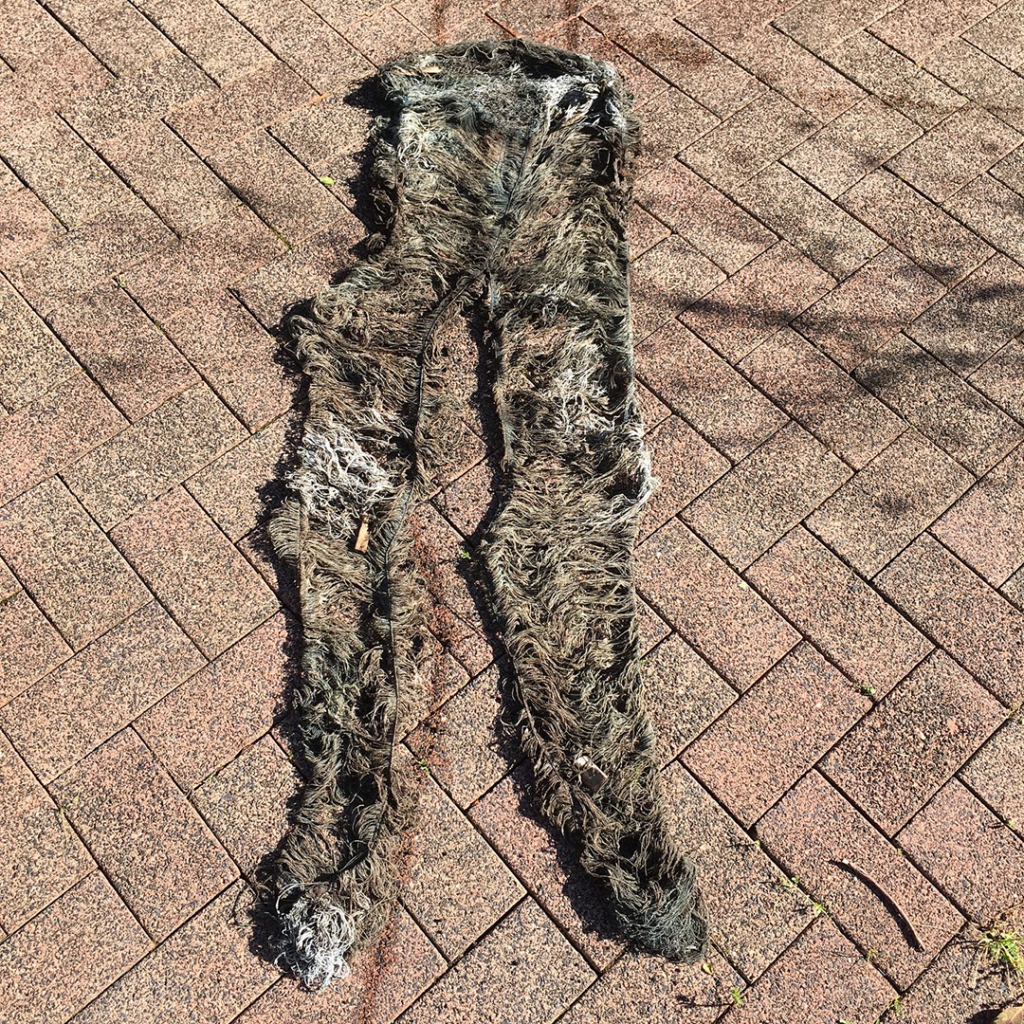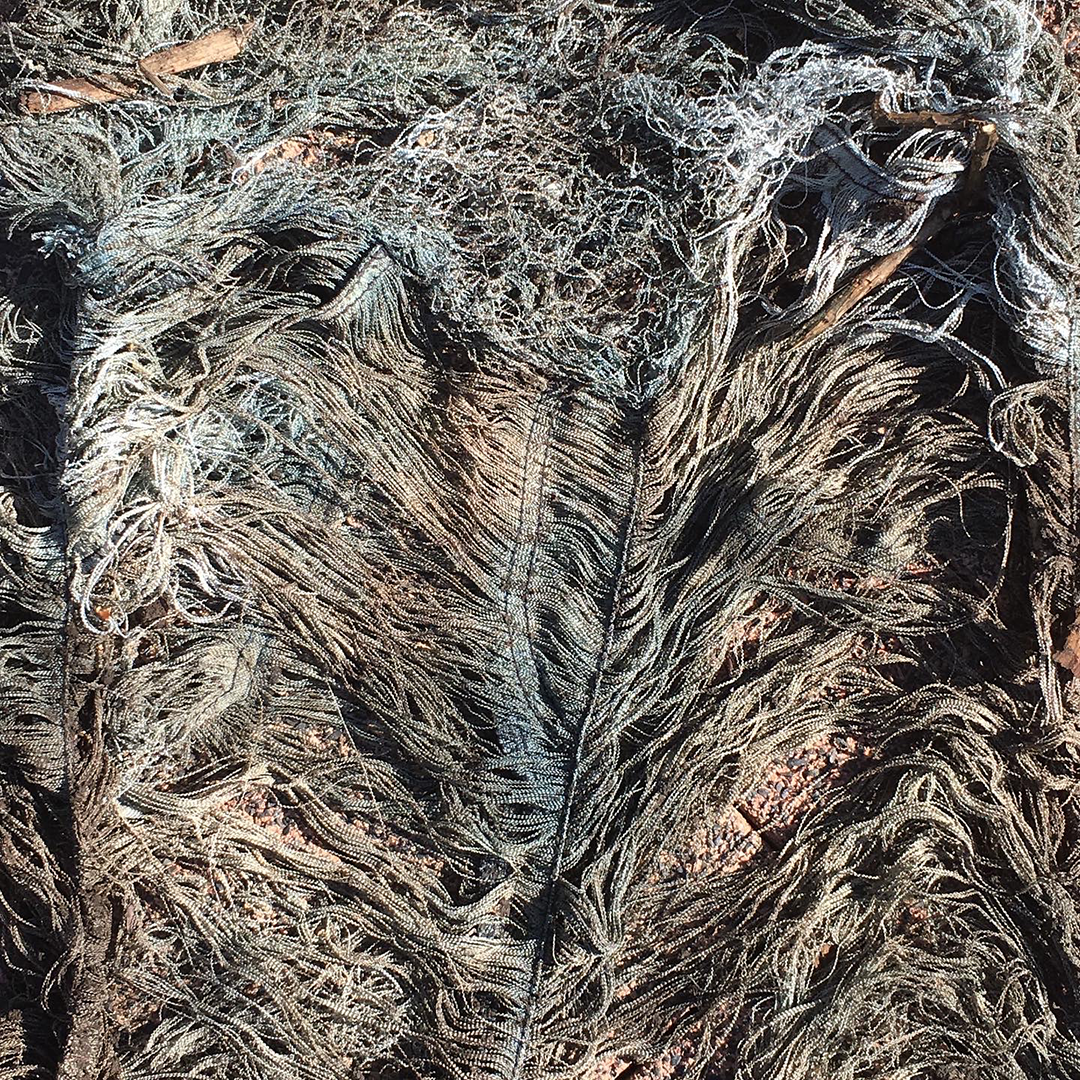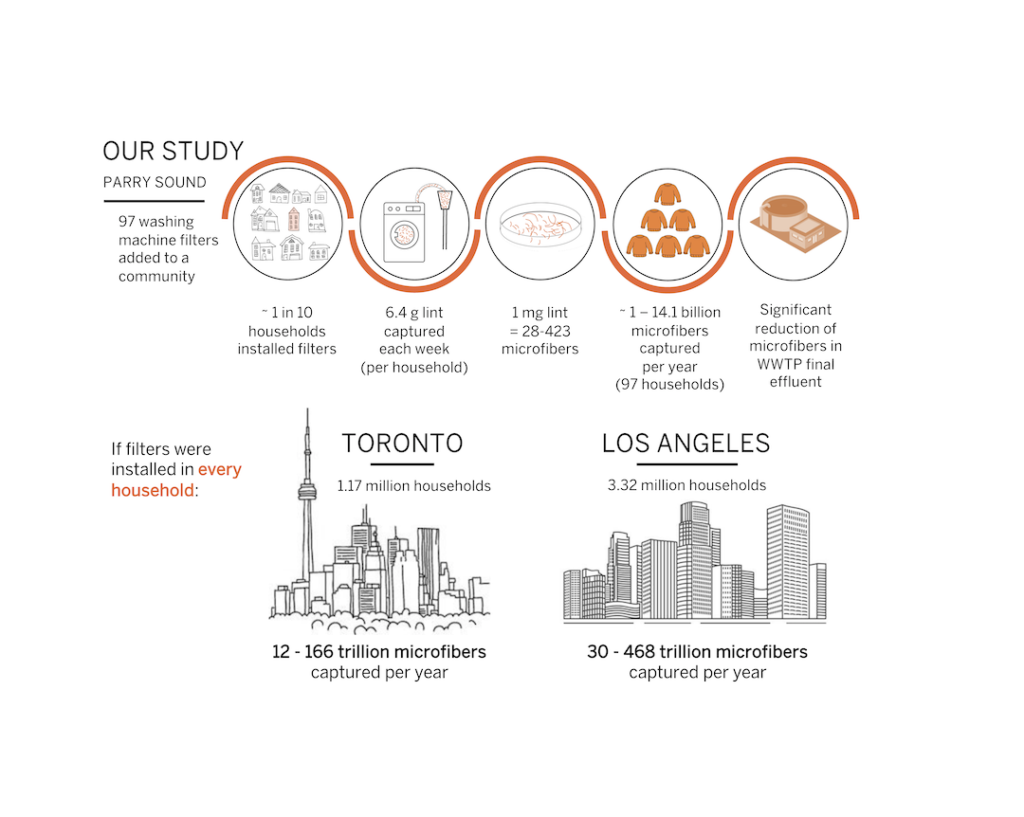Microplastics right here, microplastics there, microplastics…all over the place? Analysis has not too long ago proven that microplastics are present in our fish, beer, desk salt, ingesting water1, and most not too long ago, in our personal our bodies.2
Microplastics are small items of plastic, lower than 5mm in dimension, which come from quite a lot of sources. When massive plastic particles reminiscent of a single-use espresso cup is thrown away, that cup exists endlessly. Plastic waste by no means absolutely biodegrades. As an alternative, it breaks down into smaller and smaller items that accumulate in our surroundings. As soon as microplastics are in our surroundings, they’re almost inconceivable to take away due to their dimension.
THROW AWAY CULTURE
Within the early Nineteen Fifties we started to see an increase in plastic dependency as a result of comfort, availability, low value, and sturdiness of plastic merchandise. This Nineteen Fifties picture from Life Journal reads, “The objects flying by way of the air on this image would take 40 hours to wash, besides no family spouse must trouble.” With the widespread use of plastic, we began dwelling in a comfort tradition, the place ease and immediate gratification are prized above long-term advantages and sustainability. Though now we have come a good distance and are making strides in the direction of a much less plastic-centric surroundings, we nonetheless have important work forward of us.
For the reason that Nineteen Fifties, people have produced over 8 billion tons of plastic, most of which has already been disposed of and subsequently nonetheless circulates in our surroundings at present. In the case of plastic air pollution, out of sight shouldn’t be the identical as really gone.

TEXTILE INDUSTRY
The commonest kind of plastics we get rid of are single-use meals containers and textiles. The textile business is the second most polluting business on the earth. Globally, there are 80 million new clothes of clothes produced per yr. Quick style and our overconsumption have drastically modified the best way we view and buy clothes, ensuing within the common individual shopping for extra garments and utilizing them for much less time.
One of the widespread methods microplastics are coming into our surroundings is thru our washing machines. The clothes we put on consists of artificial, chemically handled fibres reminiscent of nylon, spandex, and polyester. Pure fibres reminiscent of wool, cotton, and bamboo do biodegrade; nevertheless, these merchandise are additionally typically handled with dyes and chemical substances to provide them a desired feel and look. These chemical substances sluggish the degrading strategy of pure fibres, permitting them to build up in our waters for years.
Cotton blue denims are an amazing instance of this course of. Our denims are synthetically dyed blue and are handled with chemical substances to supply a mushy or textured feeling. As well as, the denims are composed of combined fibres, permitting artificial fibres to provide our denims that stretchy consolation. The cotton within the denims will break down extra shortly, leaving the artificial stretchy fibres behind.4


MICROFIBRES IN THE GREAT LAKES
A single load of laundry can launch as much as 700,000 microfibres, which might find yourself in our water in two methods. Firstly, these fibres bypass the wastewater therapy plant and circulation into the water. Secondly, these fibres make their means into waterways by way of runoff as they’re unfold on agricultural land by way of sewage sludge. Waste Water Therapy Crops are unsung heroes of microfibre assortment. They’ve the power to seize as much as 99% of microfibres, that are then caught within the sewage sludge. In an effort to recirculate vitamins and decrease waste, that sewage sludge is unfold onto agricultural fields as a type of fertilizer. As wind and rainfall happen, the microfibres trapped in that sludge make their means again into the waterway by way of pure runoff. The focus of microplastics within the Nice Lakes is the same as or better than the focus discovered inside ocean currents just like the Nice Pacific Rubbish Patch.
Our plastic consumption is dangerous for our ecosystems and our well being. A 2021 examine sampled over 300 fish from Lake Ontario, the Humber River, and Laker Superior, discovering that each one the fish had microplastics in them, with most being microfibres.6 These plastic fibres have a profound impression on our fish, as their small dimension makes them simply consumable by microorganisms, fish, and different wildlife. Over time, plastics can bioaccumulate inside the meals chain. Some research have discovered that microfibres trigger stunted progress, malnourishment, and hunger. Such impacts contribute to a big ripple impact on the emergence of the meals chain.7 8
These fibres are impacting any creature that eats, drinks, and breathes, together with us. Research have discovered that on a weekly foundation, people eat one bank card dimension price of microplastics, with greater consumption quantities amongst those that use merchandise reminiscent of bottled water and occasional pods.9 The extent to which microplastics have an effect on people continues to be unknown.
Fortunate for us and our surroundings, there are tangible options to this microplastic downside! One instance is microfibre filters. These exterior, reusable filters will be related to your washer discharge hose to seize microfibres shed from the wash. As your washer discharges wastewater, the microfibre filter captures the fibres within the effluent, stopping it from washing down the drain.
PARRY SOUND & COLLINGWOOD
In 2019, Georgian Bay Ceaselessly teamed up with the College of Toronto’s Rochman Lab to check how successfully washer filters cut back microfibre emissions. The examine discovered by testing the wastewater therapy effluent earlier than and after filters had been put in that the microfibre emissions had been decreased by a mean of 41%.10 Such a big discount might even have been influenced by behavioural adjustments due to campaigning and education schemes occurring on the time.
In complete, over the size of this two-year examine, almost 50 kilos of microfibre lint was diverted from Georgian Bay’s watershed—the identical weight as a small mattress. Every milligram of lint contained 28-423 particular person microfibres. Because of this someplace between 639 million to 9.7 billion microfibres had been prevented from coming into the water. In a big metropolis reminiscent of Toronto, an initiative like this might stop 12 to 166 trillion microfibres from coming into our Nice Lakes.11

Collingwood and the encircling areas are working to divert extra microfibres by distributing 300 free microfibre filters as a part of one other two-year examine ending March 2023. By way of this examine, Georgian Bay Ceaselessly hopes to find how a lot microfibre lint is diverted and evaluate the quantity to the Parry Sound outcomes.
WHAT CAN YOU DO?
Preventing plastic air pollution can usually really feel overwhelming. Nonetheless, there are numerous steps we will tackle a person stage to scale back plastic air pollution.
Listed below are 10 methods you possibly can stop microfibre air pollution:
- Use chilly water. Analysis has proven that polyester sheds extra fibres at greater temperatures. Washing with chilly water helps to avoid wasting in your utility payments and preserves your clothes as it’s going to assist to stop fraying, shedding, and fading.
- Use entrance load washing machines. Hartline’s examine reveals that entrance load washing machines had seven occasions much less microfibres shed than high load machines.
- 13Get a microfibre filter. Relying on the model, an exterior filter can seize as much as 89% of microfibres! There are a lot of filters available on the market for buy, so you should definitely do your analysis. In case you reside within the Collingwood, Wasaga Seaside, or The Blue Mountains space, volunteer to have a filter put in free of charge!
- Keep away from quick style. Cut back your purchases by shopping for used clothes from classic or thrift shops, swap with buddies, lease or borrow garments, or buy greater high quality materials when doable.
- Reuse and repurpose clothes and plastic. Discover methods to restore and repurpose textiles by turning them into cleansing rags or tote baggage, or by donating them.
- Refuse to make use of plastic. Attempt to make it a behavior to have reusable gadgets available reminiscent of journey mugs and water bottles, fabric and mesh produce baggage, reusable cutlery, and beeswax wraps. Not utilizing plastic within the first place is simpler than recycling used plastics.
- Select merchandise and retailers with much less packaging. The place doable, make a selection to purchase from native manufacturers that cut back plastic packaging or use recycled packaging.
- Analysis recycling. Make sure that the supplies you’re placing within the recycling will be recycled by your municipality and are usually not contaminated.
- Take Motion with Nature Canada’s 30×30 Defend Nature marketing campaign to demand Canada’s leaders to satisfy their purpose to guard 30% of land, freshwater and oceans by 2030.
- Write your native MPP to demand assist for Ontario Invoice 102 to get filters on future washing machines on the producer stage. Georgian Bay Ceaselessly has designed a template kind to information you within the course of right here.
Microfibre filters are efficient at each small- and large-scale settings. These filters play a big function in serving to us cut back microfibres in our surroundings. Nonetheless, implementation of filters in washing machines as a plastic air pollution answer requires assist by laws, innovation, and most significantly, schooling and consciousness to drive change. Collectively, by growing our consciousness, becoming a member of voices with our neighborhood, and making small adjustments in our private lives, we will work collectively to guard the well being of our native ecosystems in addition to our households.
Ashley Morrison is the Challenge Supervisor for Collingwood Divert and Seize: The struggle to maintain microplastics out of our water at Georgian Bay Ceaselessly.
1 Zhang, Qun, et al. “A Evaluation of Microplastics in Desk Salt, Ingesting Water, and Air: Direct Human Publicity.” Environmental Science & Know-how, vol. 54, no. 7, 2020, pp. 3740–3751., https://doi.org/10.1021/acs.est.9b04535.
2 Jenner, Lauren C., et al. “Detection of Microplastics in Human Lung Tissue Utilizing Μftir Spectroscopy.” Science of The Complete Surroundings, vol. 831, 2022, p. 154907., https://doi.org/10.1016/j.scitotenv.2022.154907.
3 Throwaway dwelling . Life Journal, 1 August 1955, vol. 39, concern 5, pp. 43–44.
4 Zaman, Atiq & Newman, Peter. (2021). Plastics: are they a part of the zero-waste agenda or the toxic-waste agenda?. Sustainable Earth. 4. 10.1186/s42055-021-00043-8.
5 Munno, Keenan, et al. “Microplastic Contamination in Nice Lakes Fish.” Conservation Biology, vol. 36, no. 1, 2021, https://doi.org/10.1111/cobi.13794.
6 Munno, Keenan, et al. “Microplastic Contamination in Nice Lakes Fish.” Conservation Biology, vol. 36, no. 1, 2021, https://doi.org/10.1111/cobi.13794.
7 Foley C. J., Feiner Z. S., Malinich T. D., Höök T. O.. (2018). A meta-analysis of the results of publicity to microplastics on fish and aquatic invertebrates. Science of the Complete Surroundings, 631-632, 550–559
8 Bucci Ok., Tulio M., & Rochman C. M. (2019). What is thought and unknown in regards to the results of plastic air pollution: a meta-analysis and systematic assessment. Ecological Purposes, 30, e02044.
9 Ok. Senathirajah, T. Palanisami, College of Newcastle, How a lot microplastics are we ingesting? Estimation of the mass of microplastics ingested.Report for WWF Singapore, Could 2019
10 Erdle, Lisa M., et al. “Washing Machine Filters Cut back Microfiber Emissions: Proof from a Group-Scale Pilot in Parry Sound, Ontario.” Frontiers in Marine Science, vol. 8, 2021, https://doi.org/10.3389/fmars.2021.777865.
11 Erdle, Lisa M., et al. “Washing Machine Filters Cut back Microfiber Emissions: Proof from a Group-Scale Pilot in Parry Sound, Ontario.” Frontiers in Marine Science, vol. 8, 2021, https://doi.org/10.3389/fmars.2021.777865.
12 Erdle, Lisa M., et al. “Washing Machine Filters Cut back Microfiber Emissions: Proof from a Group-Scale Pilot in Parry Sound, Ontario.” Frontiers in Marine Science, vol. 8, 2021, https://doi.org/10.3389/fmars.2021.777865.

